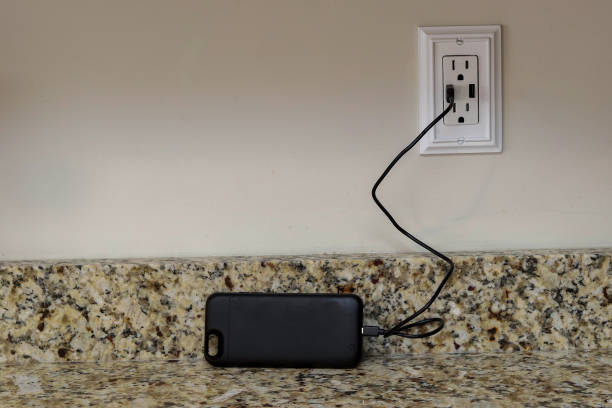
For the past few years, the design world has been making a valiant effort to catch up to our reliance on — and frequent need to recharge! — smart devices, including smartphones and tablets. And one of the most exciting changes for homeowners? Electrical outlets have gotten a much-needed makeover with the addition of USB outlets!
Our electronic smart devices are not only changing the way we spend our time or communicate, but they are also changing the way we charge. Wall outlets with various types of adaptors have been standard for years. Still, demand for elevated convenience and faster charging has driven demand for the latest and greatest electrical outlet design.
When USB wall outlets first came to market, they were prominent in airports or cafes. Now, USB electrical outlets are making their way into homes around the world so people can experience the ease of charging their devices at any time. Homeowners love USB outlets for their convenience, functionality, and aesthetic (no more cord clutter and unsightly power strips!).
Have you considered USB outlet upgrades? Here’s what you need to know.
Standard Outlets vs. USB Wall Outlets
Standard Outlets
A standard outlet is still considered the most common type of electrical outlet. Most homes feature these types of outlets in every room. To identify a standard electrical outlet, look for two slots on the side and one rounded one on the bottom.
Types of Standard Outlets
The design of a standard outlet is simple, but you can find certain standard outlets with different styles with special features. For example, a GFCI outlet, or ground fault circuit interrupter, has a “reset” and “test” button. This type of outlet is typical in bathrooms, kitchens, or any areas in which water is present. The GFCI monitors electricity and can turn itself off if there is a dangerous power surge.
Another common type of standard outlet is an AFCI outlet, also known as an arc-fault receptacle. These necessary electrical outlets protect homes against electrical fires. The outlets have “shutters” built in that are only open for electrical plugs. AFCI outlets are most popular for outdoor use since they are typically weather-resistant and won’t corrode due to moisture.
USB Electrical Outlets
USB outlets combine the design of a regular electrical outlet with the added benefit of USB charging slots, which effectively double its functionality. Outlets can be installed with three-pronged slots as well as USB ports, so you can accommodate multiple electronics at once.
Types of USB Electrical Outlets
Depending on personal needs or wants, USB outlets can easily be customized to suit your demands. The typical USB wall outlet model design has two outlet slots and two USB slots in between, allowing four total devices to be charged at once. However, other models can have two USB slots but only one outlet, or have four slots of USBs only.
USB outlets will also vary based on their ports and will affect what cables will fit. For USB wall outlet connections, there are two types: USB-A and USB-C. Depending on the style of your USB outlet, it may come with just type A or have both type A and C.
- USB-A: The most common and easy-to-recognize port, USB-A will accommodate most USB ports on laptops and computers. The design is identifiable by its small, rectangular shape and grids on one side.
- USB-C: Type C ports are much newer models. They are becoming standard for cell phones, controllers, and even laptops. Unlike type A, USB-C works for both charging and data transfer. As the newest type of USB outlet to hit the market, the USB-C also offers a much faster charging speed than other USB outlets.
What to Look for in a USB Outlet
- Safety features: A surge protector USB will offer an added layer of protection for your device against power spikes. In addition, if you have children, a USB outlet with tamper resistance is likely necessary.
- The number of USB slots: For a home office, or an area where kids are doing homework, you’ll want an even split between USB and three-prong sockets. However, your kitchen may benefit from a dedicated charging station with four USB slots.
- Total amperage: By choosing a high-amperage USB outlet, you won’t have to worry about overloading your outlet. The USB port itself can recognize how much power a device needs and deliver the safest amount. By selecting the highest amperage, you can ensure a fast charging speed for your devices.
Installing Your USB Outlets
You may think installing new outlets is easy, but that doesn’t mean you should attempt to do it yourself. Without the right safety procedures and electrical knowledge, there is a considerable risk of installing the outlet wrong and inviting unnecessary danger. Keep in mind, unsafe outlets can affect the value of your home if the outlets aren’t up to electrical codes. It’s best to choose a skilled electrician, like everyone on our staff at Jason Wright.
Whether it’s traditional or USB outlets, if you’re increasing the functionality of your home, the Jason Wright team is here to help! As your home becomes more integrated with technology, additional outlets or USB outlets allow for more convenience.
As Kansas City’s Electrical Concierge, we help you uncover your residential wiring needs and execute beyond your satisfaction. Contact us today.
